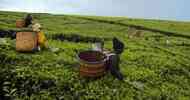Transient Pictures | 13 July 2010
Film Description
Over the past 50 years, the West has sent some $2.3 trillion in aid to Africa, the poorest of the world’s continents. It would be difficult to find anyone who believes that money has significantly reduced poverty or succeeded in promoting social stability on the continent. Many, both inside and outside the international development community, are asking how so much money could be spent to so little effect. A more explosive question might be why some communities in Africa are not only disillusioned by the aid projects, but even fighting to stop them.
Good Fortune - 10 min Trailer from Transient Pictures on Vimeo.
The new documentary Good Fortune delivers eye-opening answers from the point of view of the people resisting development projects that are supposed to help them. To capture this vantage point, director Landon Van Soest spent over a year and a half in Kenya, living on a shoestring and filming in areas he had been warned were too dangerous to enter. The result is a rare and intimate portrait of two vibrant Kenyan communities, one urban, the other rural. What they share is being square in the crosshairs of huge aid projects whose supposed benefits don’t impress them. In fact, people in these two communities believe the projects will devastate their lives, and they have organized to fight back.
Kenyan President Mwai Kibaki calls Nairobi’s Kibera neighborhood, Africa’s largest slum and home to an estimated one million people, an “eyesore.” Sara Candiracci of the United Nations Human Settlements Program says flatly, “It’s not acceptable that Kibera exists.” But for Silva Adhiambo, a midwife from an impoverished village, moving to Kibera 15 years ago has proved an economic boon. There is plenty of need for her services in the crowded community of mud shacks, narrow streets and open sewers. She earns a steady income, something unimaginable in her native village, and can even send her children to decent schools. There is “a lot of trash” in Kibera, she admits, “but life is good here.” A stroll with Adhiambo reveals a community buzzing with economic activity — commerce at rows of market stalls, mechanics fixing just about anything and other services on offer, such as Adhiambo’s midwifery. Far from being mired in hopeless poverty, Kibera is a community of strivers who have ingeniously created a life for themselves from the meanest of materials and opportunities.
As recounted in Good Fortune, the Kenyan government and the United Nations have joined forces in a massive “slum-upgrading” program, which calls for Kibera to be demolished completely and replaced with modern housing and infrastructure. The community’s residents have been told their eviction will be temporary and they will be able to come back to the area and live in the new housing. But they have good reason to distrust the government. Similar projects have resulted in housing being expropriated by government officials and their allies — in one case, by the president’s wife, according to Adhiambo — and sold on the open market for inflated profits.
Adhiambo, her husband, Fred, and her neighbors organize to stop the demolition. For the government and the United Nations, the Kiberans’ resistance is misguided. After all, says the United Nations’ Candiracci, “You need to have a big project to have a big impact.” As the project becomes increasingly politicized, Adhiambo rallies to safeguard her community and finds herself involved in the dispute over Kenya’s 2007 elections, which at the time spiraled into violence and led to over 800 deaths and 600,000 displaced people.
On the other side of the country, in a rural region of western Kenya that is often described as the country’s poorest, American businessman Calvin Burgess is investing over $21 million in a huge state-of-the-art rice farm through his Oklahoma-based company, Dominion Farms Limited. Burgess touts the project’s ability to create employment, build modern infrastructure and ensure food security in the area. “This is how you solve poverty,” he says, “instead of creating Band-Aids.”
But Dominion’s indigenous neighbors don’t see poverty being solved; they see quite the opposite. Farmer and schoolteacher Jackson Omondi and his family have flourished in the area for generations by growing crops and grazing cattle in the fertile wetland. “I am not poor,” Omondi insists. “I have a resource which can make me rich, but now he [Burgess] is taking that away and he’s making me poor.” Omondi speaks for more than 500 families whose homes and villages will be flooded by the reservoir Dominion plans to create. Refusing to abandon his property, Omondi begins organizing his community, writing letters, holding meetings and staging protests.
Good Fortune’s behind-the-scenes account of the struggles by Adhiambo, Omondi and their communities to protect their livelihoods, and the very mixed results they achieve, serve as a dramatic wake-up call to the international development community and its allies in local governments. No longer can poor people be seen as passive recipients of international aid programs — and the political and economic machinations that come with them. Good Fortune is a tragic, heartening, infuriating and revelatory report from the poor people’s side of the global development struggle.
“The film explores how the lofty ideals of Western humanitarians intent on solving world poverty play out on the ground in the developing world,” says Van Soest. “Though the film profiles two Kenyans on the receiving end of foreign aid, it is really meant to be a reflection on us as Western citizens and the sense of paternalism we project on the developing world, even when we have the best intentions.
“I was constantly amazed at the courage and conviction that Jackson and Silva showed in the face of immense hardship,” Van Soest continues. “Both helped organize their communities, contacted local politicians and fought for their communities.” Producer Jeremy Levine adds, “We really wanted to bring Jackson and Silva’s voices into the debate on international development. It’s our hope that the film can help advocate for more community leadership in development and local, grassroots solutions for Africa.”
Good Fortune is a production of Transient Pictures.
More information at the POV (documentaries with a "point of view") website: http://www.pbs.org/pov/goodfortune/
"Behind the lens" discussion with the film makers: http://www.youtube.com/watch?v=71YxNJrnqkQ













